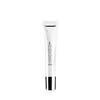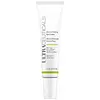What's inside
What's inside
 Key Ingredients
Key Ingredients

 Benefits
Benefits

 Concerns
Concerns

 Ingredients Side-by-side
Ingredients Side-by-side

Water
Skin ConditioningGlycerin
HumectantButyrospermum Parkii Butter
Skin ConditioningCetearyl Alcohol
EmollientSqualene
EmollientAscorbyl Tetraisopalmitate
AntioxidantCaprylic/Capric Triglyceride
MaskingCyclopentasiloxane
EmollientCetearyl Glucoside
EmulsifyingDimethicone Crosspolymer
Emulsion StabilisingLecithin
EmollientDimethicone
EmollientPhenoxyethanol
PreservativeSodium Acrylates Copolymer
Sodium Hyaluronate
HumectantGlycyrrhiza Glabra Root Extract
BleachingXanthan Gum
EmulsifyingSteareth-20
CleansingHesperidin Methyl Chalcone
AntioxidantSodium Hydroxymethylglycinate
PreservativeEthylhexylglycerin
Skin ConditioningTocopherol
AntioxidantGlycine Soja Oil
EmollientN-Hydroxysuccinimide
Skin ConditioningDipeptide-2
Skin ConditioningPalmitoyl Tetrapeptide-7
Skin ConditioningChrysin
Skin ConditioningPalmitoyl Tripeptide-1
Skin ConditioningCitric Acid
BufferingDisodium EDTA
Silica
AbrasiveMica
Cosmetic ColorantCI 77891
Cosmetic ColorantWater, Glycerin, Butyrospermum Parkii Butter, Cetearyl Alcohol, Squalene, Ascorbyl Tetraisopalmitate, Caprylic/Capric Triglyceride, Cyclopentasiloxane, Cetearyl Glucoside, Dimethicone Crosspolymer, Lecithin, Dimethicone, Phenoxyethanol, Sodium Acrylates Copolymer, Sodium Hyaluronate, Glycyrrhiza Glabra Root Extract, Xanthan Gum, Steareth-20, Hesperidin Methyl Chalcone, Sodium Hydroxymethylglycinate, Ethylhexylglycerin, Tocopherol, Glycine Soja Oil, N-Hydroxysuccinimide, Dipeptide-2, Palmitoyl Tetrapeptide-7, Chrysin, Palmitoyl Tripeptide-1, Citric Acid, Disodium EDTA, Silica, Mica, CI 77891
Dimethicone
EmollientC12-15 Alkyl Benzoate
AntimicrobialAscorbic Acid
AntioxidantSqualane
EmollientDimethicone/Vinyl Dimethicone Crosspolymer
Skin ConditioningEthylhexyl Palmitate
EmollientHydrogenated Vegetable Oil
EmollientPolysilicone-11
Dipropylene Glycol Dibenzoate
EmollientHydroxyethyl Acrylate/Sodium Acryloyldimethyl Taurate Copolymer
Emulsion StabilisingTetradecane
PerfumingCetearyl Dimethicone Crosspolymer
Dimethicone Crosspolymer
Emulsion StabilisingBisabolol
MaskingHydrated Silica
AbrasivePPG-15 Stearyl Ether Benzoate
EmollientTocopherol
AntioxidantTribehenin
EmollientSalicyloyl Phytosphingosine
Skin ConditioningGlycine Soja Oil
EmollientSorbitan Laurate
EmulsifyingC18-36 Acid Glycol Ester
EmollientC18-36 Acid Triglyceride
EmollientCeramide Ng
Skin ConditioningTrihydroxystearin
Skin ConditioningPEG-10 Phytosterol
EmulsifyingLactic Acid
BufferingSodium Hyaluronate
HumectantPalmitoyl Hexapeptide-12
Skin ConditioningPalmitoyl Tripeptide-1
Skin ConditioningPalmitoyl Tetrapeptide-7
Skin ConditioningGlucomannan
Skin ConditioningDimethicone, C12-15 Alkyl Benzoate, Ascorbic Acid, Squalane, Dimethicone/Vinyl Dimethicone Crosspolymer, Ethylhexyl Palmitate, Hydrogenated Vegetable Oil, Polysilicone-11, Dipropylene Glycol Dibenzoate, Hydroxyethyl Acrylate/Sodium Acryloyldimethyl Taurate Copolymer, Tetradecane, Cetearyl Dimethicone Crosspolymer, Dimethicone Crosspolymer, Bisabolol, Hydrated Silica, PPG-15 Stearyl Ether Benzoate, Tocopherol, Tribehenin, Salicyloyl Phytosphingosine, Glycine Soja Oil, Sorbitan Laurate, C18-36 Acid Glycol Ester, C18-36 Acid Triglyceride, Ceramide Ng, Trihydroxystearin, PEG-10 Phytosterol, Lactic Acid, Sodium Hyaluronate, Palmitoyl Hexapeptide-12, Palmitoyl Tripeptide-1, Palmitoyl Tetrapeptide-7, Glucomannan
Alternatives
Ingredients Explained
These ingredients are found in both products.
Ingredients higher up in an ingredient list are typically present in a larger amount.
Dimethicone is a type of synthetic silicone created from natural materials such as quartz.
What it does:
Dimethicone comes in different viscosities:
Depending on the viscosity, dimethicone has different properties.
Ingredients lists don't always show which type is used, so we recommend reaching out to the brand if you have questions about the viscosity.
This ingredient is unlikely to cause irritation because it does not get absorbed into skin. However, people with silicone allergies should be careful about using this ingredient.
Note: Dimethicone may contribute to pilling. This is because it is not oil or water soluble, so pilling may occur when layered with products. When mixed with heavy oils in a formula, the outcome is also quite greasy.
Learn more about DimethiconeDimethicone Crosspolymer is a silicone created by modifying dimethicone with hydrocarbon side chains. Due to its large size, it does not penetrate skin. It is considered non-occlusive.
Dimethicone Crosspolymer is used to stabilize and thicken products. It also helps give products a silky feel.
Glycine Soja Oil comes from the soybean. Glycine Soja is native to eastern Asia.
Soybean oil is an emollient. It is rich in antioxidants and fatty acids including palmitic, stearic, oleic, and linoleic acids.
As an emollient, the fatty acids in soybean oil helps keep your skin soft and hydrated. It does so by creating a film on top that traps moisture in.
Soybean oil is also rich in vitamin E, a potent antioxidant. Vitamin E is also anti-inflammatory and provides a soothing effect.
Studies show soy may help fade hyperpigmentation from UVB. It does so by disrupting the melanin process from UVB induced skin inflammation.
This ingredient may not be malassezia folliculitis, or fungal-acne, safe.
Soybeans are rich in proteins and are part of the legume family. Foods made with soybeans include tofu, soymilk, edamame, miso, and soy sauce.
Learn more about Glycine Soja OilPalmitoyl Tetrapeptide-7 (formerly Palmitoyl Tetrapeptide-3) is a lab-made peptide with anti-inflammatory and skin-repairing benefits. It's made up of four amino acids (glycine, glutamine, proline, and arginine) and palmitic acid (which helps it penetrate skin more effectively).
This ingredient helps reduce inflammation by limiting the production of interleukin-6 (IL-6), a chemical that triggers inflammatory responses, particularly after UV exposure.
Less inflammation = slower collagen breakdown and a longer-lasting, youthful appearance.
Palmitoyl Tetrapeptide-7 also stimulates collagen production and supports a healthier skin barrier.
Over time, this can improve skin firmness, hydration, and reduce the appearance of fine lines. It’s commonly paired with Palmitoyl Tripeptide-1 in the well-known Matrixyl 3000 complex for enhanced anti-aging effects.
This ingredient has been shown to be effective and safe in cosmetic use and you'll typically find it in small amounts (less than 0.01%).
Due to its palmitic acid base, it may not be safe for Malassezia folliculitis.
Read more about other common types of peptides here:
Learn more about Palmitoyl Tetrapeptide-7Palmitoyl Tripeptide-1 is also known as pal-GHK. It is made up of 3 amino acids and palmitic acid, a fatty acid that helps it absorb into skin more easily.
This peptide is as a signal peptide, meaning it tells the skin to produce more collagen. Collagen is the key protein that helps form the skin's structure and keep it plump, firm, and hydrated.
By boosting collagen production, this ingredient supports a stronger skin barrier and helps reduce the appearance of wrinkles.
You'll most likely see this ingredient paired with Palmitoyl Tetrapeptide-7 in the well-known Matrixyl 3000 complex. While results from in-house testing should be viewed cautiously, this peptide duo is among the most studied and widely used in modern skincare.
Due to its palmitic acid base, this ingredient may not be safe for Malassezia folliculitis.
Read more about other common types of peptides here:
Learn more about Palmitoyl Tripeptide-1Sodium Hyaluronate is hyaluronic acid's salt form. It is commonly derived from the sodium salt of hyaluronic acid.
Like hyaluronic acid, it is great at holding water and acts as a humectant. This makes it a great skin hydrating ingredient.
Sodium Hyaluronate is naturally occurring in our bodies and is mostly found in eye fluid and joints.
These are some other common types of Hyaluronic Acid:
Learn more about Sodium HyaluronateTocopherol (also known as Vitamin E) is a common antioxidant used to help protect the skin from free-radicals and strengthen the skin barrier. It's also fat soluble - this means our skin is great at absorbing it.
Vitamin E also helps keep your natural skin lipids healthy. Your lipid skin barrier naturally consists of lipids, ceramides, and fatty acids. Vitamin E offers extra protection for your skin’s lipid barrier, keeping your skin healthy and nourished.
Another benefit is a bit of UV protection. Vitamin E helps reduce the damage caused by UVB rays. (It should not replace your sunscreen). Combining it with Vitamin C can decrease sunburned cells and hyperpigmentation after UV exposure.
You might have noticed Vitamin E + C often paired together. This is because it is great at stabilizing Vitamin C. Using the two together helps increase the effectiveness of both ingredients.
There are often claims that Vitamin E can reduce/prevent scarring, but these claims haven't been confirmed by scientific research.
Learn more about Tocopherol